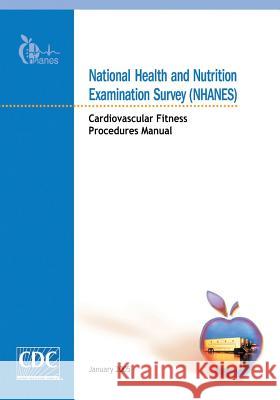National Health and Nutrition Examination Survey (NHANES): Cardiovascular Fitness Procedures Manual » książka
National Health and Nutrition Examination Survey (NHANES): Cardiovascular Fitness Procedures Manual
ISBN-13: 9781499256086 / Angielski / Miękka / 2014 / 282 str.
National Health and Nutrition Examination Survey (NHANES): Cardiovascular Fitness Procedures Manual
ISBN-13: 9781499256086 / Angielski / Miękka / 2014 / 282 str.
(netto: 113,25 VAT: 5%)
Najniższa cena z 30 dni: 111,47 zł
ok. 13-18 dni roboczych.
Darmowa dostawa!
Cardiovascular disease is currently the leading cause of death in the United States for both men and women. A sedentary lifestyle (along with elevated blood cholesterol levels, hypertension, and smoking) is a major modifiable risk factor for cardiovascular disease. According to current data however, only about 24 percent of American adults currently meet the physical activity recommendations outlined in the 1996 Surgeon General's Report. In previous versions of NHANES, no direct cardiovascular fitness assessment components have been included in the data collection. A cardiovascular fitness component will be included with the current NHANES. Cardiovascular fitness is defined as the body's ability to uptake, transport, and utilize oxygen. Other terminology that is sometimes used to describe cardiovascular fitness includes VO2 max, maximal oxygen uptake, maximal oxygen consumption, and aerobic power. A maximal treadmill test is considered to be the most valid method of measuring cardiovascular fitness. By collecting and analyzing expired air during the test, one can directly measure VO2 max. This type of testing is done in a clinical setting and is extremely expensive and time consuming. A 12-lead electrocardiogram (ECG) is typically utilized during a maximal test. Thus, maximal treadmill testing can be used to diagnose stress induced cardiac arrhythmias and coronary heart disease. Due to time constraints, test setting, expense, and the large number of SPs in NHANES, it is neither feasible nor possible to utilize this method to evaluate cardiovascular fitness. Submaximal treadmill testing will be utilized as a means to estimate cardiovascular fitness levels during NHANES. Based on variables including gender, age, BMI, and self-reported level of physical activity, SPs will be assigned to one of eight treadmill test protocols, each varying in difficulty. Each of the eight protocols was designed so that the SP could walk at all times. The goal of each protocol is to elicit a heart rate that is approximately 75 percent of the predicted maximum (220-age) by the end of the test. Each protocol includes a 2-minute warm-up, followed by two 3-minute stages and a 2-minute cool-down period. By monitoring heart rate response to each of the 3-minute stages, VO2 max can be predicted with a reasonable degree of accuracy. It is important to note that while the heart rate will be monitored during the treadmill test, there will be no electrocardiogram (ECG) on the screen. Therefore, the NHANES submaximal treadmill test is intended only to estimate cardiovascular fitness levels. It cannot be used to diagnose or identify any cardiovascular disease. SPs will be carefully screened prior to the treadmill test using questionnaires and measurements of resting heart rate and resting blood pressure. High risk (symptomatic, with disease, etc.) individuals will be excluded, so that only apparently healthy individuals will undergo treadmill testing. The combination of screening, monitoring, and the submaximal nature of the test will all contribute to the safety of this component.











